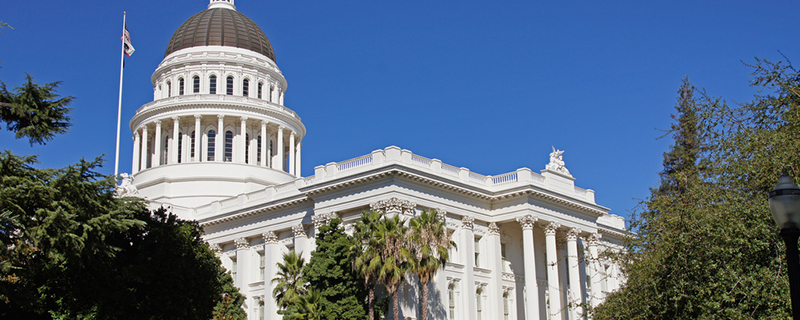Elected officials and staff at the State Capitol are beginning a new legislative year in unfamiliar surroundings – new offices.
They moved in November and December to a new “swing space” building a block from the Capitol, which will be their home for about five years as a new Capitol “Annex” is built. Legislative floor sessions will continue in the Senate and Assembly chambers while construction goes on.
The move prompted a wave of nostalgia. Capitol veterans reminisced about the different offices where they worked. Reporters shared memories about famous press conferences that took place in Room 1190, the Capitol press conference room.
And in another Capitol tradition, activists are trying to stop the project. A group called Save Our Capitol held a Capitol protest in November listing many grievances against the project, from its growing cost to the removal or moving of a handful of trees. The Sacramento Business Journal reported in October that a lawsuit filed against the project had been dismissed, while another lawsuit moves forward.
Opponents argue that the Capitol Annex is just as historic as the Capitol and should be treated as such.
Back in the 1940’s when the project was being drawn up, a standard-looking government office building of the era was essentially tacked onto the iconic Capitol building. Columnist Dan Walters called termed it “a rectangular – and downright ugly – annex” in a column.
He’s right – just because something is old doesn’t make it historic, beautiful, or worthy of preservation.
Opponents also contend that the Capitol can be refurbished without being torn down. Arguing that the Legislature has been “a poor steward,” opponent Richard Cowan argues that “it’s a little wrong to say now, ‘We should tear (the Annex) down because of these needs, which we’ve ignored over the years.’”
Poor management by government officials doesn’t negate serious public and workplace safety issues that must be addressed. As the Sacramento Bee reports, “the building has fallen out of compliance with a list of building and safety codes, including Americans with Disabilities Act standards” and there are “a variety of safety concerns, like asbestos and mold.”
Having worked at the Capitol for 18 years, I’m not crying any tears about the demise of the Annex. I say let’s get out the wrecking ball. Working in that building every day, I know what an outdated and uncomfortable workplace it is.
While taxpayers likely aren’t sympathetic to the plight of Capitol workers, there is a very important reason why fiscal conservative should see the Capitol renovation and its billion dollar price tag are a wise use of taxpayer dollars.
Lack of space has meant lack of public access to their elected officials and their government. In my view, this has contributed to the general lack of transparency and more decisions behind made behind closed doors at the Capitol.
With our evolving citizen democracy, Californians are far more engaged with their state lawmakers than ever before. Capitol hallways today are routinely jam packed with citizens groups and advocates wanting to meet with their representatives or testify at committee hearings. The current building footprint simply isn’t large enough to accommodate the public to make their voices heard.
Opponents contend that the Annex Project would reduce access to the West Steps, a popular setting for protest rallies. As a former Capitol insider, I’ll let you in on a little secret – no one hears you inside the building when you have a noisy rally outside.
If opponents really want to ensure people’s voices are heard, isn’t it more important that we have sufficient room inside the People’s House so the public can meet directly with their representatives and engage on issues important to them and their community?
Opponents aren’t wrong to be concerned that the price tag of the Capitol Annex project has steadily increased since it was first proposed. However, government construction projects being completed at or under budget in California are as rare as unicorns. If it were to be refurbished instead of rebuilt, that project would likely come in significantly over budget, too.
If there was ever a time to undertake this project, now is the time when California has another year of record budget surpluses, the state is taking in billions of dollars from Washington for infrastructure, and lawmakers literally have more money than they know what to do with.
Tim Anaya is the Pacific Research Institute’s senior director of communications and the Sacramento office.

